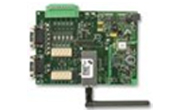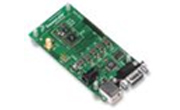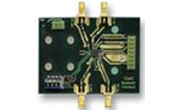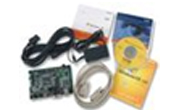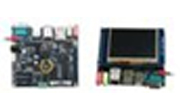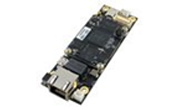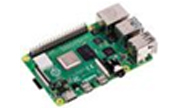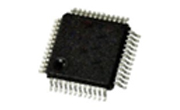How bridging is performed with matter network and its ecosystem
A smart home utilises Internet-connected devices, known as smart devices, to remotely manage appliances and systems such as heating and lighting.
Users can access these Smart Devices to control, automate, and optimise various home functions. These devices can connect to smartphones or tablets via Wi-Fi, Thread, or Bluetooth.
The Matter protocol, developed by the Connectivity Standards Alliance (CSA), is a universal and secure connectivity standard for smart home devices. It is based on the Internet Protocol (IP) and supports Wi-Fi, Ethernet, and Thread technologies for device connectivity. Matter is designed for simplicity, reliability, and security, offering a standard application layer for devices to interact with each other and the cloud. Matter also provides end-to-end encryption, device certification, and easy onboarding. It is compatible with voice assistants like Alexa, Siri, and Google Assistant and supports various device types, including lights, locks, cameras, and thermostats.

Figure 1: Connectivity of matter showing interoperability between devices (Source)
Matter is an open-source, royalty-free connectivity standard designed to unify the smart home ecosystem. It ensures that devices from different manufacturers can work together seamlessly (See Figure 1). With its promise of cross-ecosystem compatibility and ease of use, Matter is an appealing choice for developers creating smart home solutions.
Matter is built on a strong cryptographic suite that uses well-known cryptographic primitives. Security and privacy are key concerns of IoT device users, and Matter addresses these by providing a strong, resilient, and easy-to-implement architecture as the foundation for secure IoT devices. A key goal of Matter is to simplify the process of adding smart devices to consumers' homes, eliminating the need to determine platform compatibility.
Key Considerations for Matter Development:
- Device compatibility: Ensure your hardware and software choices are compatible with the Matter standard.
- Security: Implement robust security measures to protect your devices and user data.
- Interoperability: Test your devices with other Matter-compatible devices to verify seamless communication.
- User experience: prioritise a user-friendly experience for consumers.
- Certification: Obtain Matter certification to ensure your devices comply with the standard.
Matter network architecture
Matter devices use an application layer on top of a Matter-enabled software stack, illustrated in Figure 2, which runs on a hardware platform. This platform usually consists of a secure MCU or SoC, possibly accompanied by a secure element, and it offers essential security services through APIs that can be accessed by other software layers. These services encompass cryptographic primitives, random number generation, secure cryptographic key storage, and tamper resistance. The platform's ability to withstand attacks varies.

Figure 2: Matter application interface layer (Source)
Messages within the Matter network are sent and received by IoT devices and ecosystems using standard Internet protocols such as TCP/IP and UDP, using IPv6 addressing. These messages are transmitted to Matter-enabled products via Wi-Fi and Thread networks, while Bluetooth LE facilitates the addition of nodes through smartphones. Matter products are designed for seamless integration, allowing plug-and-play functionality with other products and ecosystems using the Matter API.
Matter ecosystems
The Matter strategy focuses on developing application software for embedded devices, such as microprocessors, microcontrollers, and smart home ecosystems. This includes cloud services, smartphones, hubs, speakers, and Matter Controllers. Modern consumer electronics products are increasingly software-defined, operating within cloud ecosystems and interacting locally through controllers and smartphone apps. The open-source Matter software stack, available on GitHub, is pre-integrated with hardware platforms from various suppliers, enabling swift development and progress for developers. There are currently four Matter-enabled ecosystems: Amazon Alexa, Google Home, Apple Home, and Samsung SmartThings. The foundation of Matter's value proposition is interoperability, ensuring that any device bearing the Matter logo works seamlessly with all other Matter devices.
A Matter Fabric represents a security domain containing a collection of nodes that can identify and communicate with each other within that domain. Each Matter Fabric assigns a unique Node ID to each node within the fabric and a unique Fabric ID to the domain. A Matter device can belong to multiple Matter fabrics, each associated with different Node IDs and Fabric IDs depending on the fabric it communicates with.
The Matter ecosystem includes the Administrative Domain Manager (ADM), which manages a group of Matter devices to create a unified device 'fabric'. This fabric is made up of reliable devices connected by shared operational credentials, a unified namespace, and persistent device bindings. From the user's perspective, the ADM acts as Matter's administrative control panel. Controllers are software components that operate on local devices, usually popular consumer electronics products like smartphones, tablets, touchscreen panels, smart speakers, video hubs, and AV equipment.

Figure 3: Picture showing connecting Matter and non-matter devices (Source)
In Figure 3, we can see that each home ecosystem forms its own unique fabric, comprising its root of trust, operational credentials, namespaces, device bindings, user interface, and operational procedures. Matter's 'multi-admin' feature allows multiple ecosystems to coexist, enabling the simultaneous use of the same devices across different ecosystems. However, the multi-admin specifications only cover the basics of creating these multiple ecosystem-specific Matter fabrics and do not ensure seamless interaction between them. All Matter ecosystems carry out routine tasks such as device onboarding, fabric creation and maintenance, and device control, including turning devices on/off, dimming lights, unlocking doors, and other standard operations. Despite these generic functions, many product companies are eager to add value by developing specialised controls that require custom application code on phones, cloud services, and Matter Controllers. Each ecosystem provides rich APIs for building solution-specific apps with Matter capabilities to support this.
Bridging matter to non-matter technologies
Smart homes utilise connected devices that are based on Wi-Fi or Thread technologies, each serving a specific role within the Matter network. These devices are compatible with network communication protocols such as Wi-Fi, Ethernet, or Thread and require Bluetooth® Low Energy technology for commissioning. End devices are responsible for carrying out final applications, while routers or bridges facilitate data transfer between different protocols.
Many IoT devices currently supporting Zigbee will also be compatible with Matter. The supporting infrastructure necessitates a bridging solution to ensure seamless communication between Matter-based and Zigbee-based devices. A bridge device typically integrates high-performance MCUs with Ethernet capability to connect various connectivity products. Matter bridges also extend to other technologies such as Zigbee, Bluetooth® Mesh, and Z-Wave, which are supported by many IoT devices.

Figure 4: Bridging matter to non-matter technologies (Source)
In Figure 4, Controllers like smartphones or tablets are shown commissioning end devices into the Matter network through Bluetooth Low Energy. A solution integrating high-performance MCUs with Ethernet capability is necessary to support dual infrastructure. A dual-core MCU is ideal for embedding the Matter layer and translating it to and from the Zigbee protocol. Device manufacturers can choose platform security based on risk and threat analysis of their devices, ensuring it doesn't compromise the ease of use and functionality of Matter devices. They can select a platform aligning with their needs in terms of cost, security services, and resilience against attacks, allowing them to focus on developing their application layer while relying on the platform for core security services. This modular approach also improves maintainability, as the platform vendor can manage updates to the cryptographic suite or robustness requirements with minimal impact on the device manufacturer and without disrupting the user experience. Manufacturers can use a Matter-ready hardware platform or implement low-level security features on a more generic platform.
Matter over thread and matter over Wi-Fi - Use case using Silicon Labs
The illustration displays the hardware setup for Matter+OpenThread (Matter Hub and Accessory Device) and Matter+Wi-Fi (Accessory Device). The EFR32MG24/MG26 is the recommended starting point for Matter MCUs, which includes the Matter Hub RCP and Accessory Devices. This MCU provides Secure Vault and can store an upgraded image in its internal flash memory, making it well-suited for running Matter over Thread and Matter over Wi-Fi.

a. Using EFR32 Radio board

b. Using SiWx917
Figure 5: Matter+openthread and matter+Wi-Fi setup (Source)
In Figure 5, Silicon Labs has developed a demo for Matter over Wi-Fi using two boards: the Silicon Labs EFR32 Radio board for Matter code and either the SiWx917 or another specified board for the Wi-Fi protocol stack. The SoC mode demo uses the SiWx917 SoC board, which integrates MCU for peripheral and application-related processing to support Matter over Wi-Fi in a single-chip package.
The setup process includes creating a simple network of light, a switch, and a Matter hub. It involves setting up hardware and software, creating a Matter hub on a Raspberry Pi, compiling and loading a light and switch application onto two Silicon Labs development boards, creating a Matter network with the Matter Accessory Devices (MADs) and the Matter hub, testing the light through the Matter hub, and binding the switch MAD to the light MAD. The requirements are common to both demos. The Thread demo also requires a radio co-processor (RCP) as part of the Matter hub. The steps involved are outlined below:
- Set up the hardware and software.
- Creating a Matter hub on a Raspberry Pi
- Compile and load the light and switch application onto two Silicon Labs development boards.
- Create a Matter network with the MADs and the Matter hub
- Testing the light through the Matter hub
- Bind the switch MAD to the light MAD.
To demonstrate Matter over Wi-Fi and Matter over Thread, you will need a simple development environment with Simplicity Studio, two EFR32MG24-based development boards, and a Raspberry Pi as a Matter hub. For the Matter hub, you will need a Raspberry Pi 4B and a high-speed 64 GB SD card. Accessory devices for Matter over Wi-Fi include the Silicon Labs EFR32 Radio board for NCP mode and the SiWx917 SoC board for SoC mode. The integrated MCU is dedicated to peripheral and application-related processing for Matter, while the ThreadArch® runs the wireless and networking protocol stacks.
To find for more details on demonstration, click here.
Matter supported products
To fully leverage Matter, developers require standardised tools, SDKs, and specialised development boards. Major semiconductor companies offer comprehensive solutions, including development boards and software tools, to streamline the development process and ensure compatibility with the Matter standard.
List of supported products available from Infineon, Microchip, Nordic Semiconductor, ST microelectronics, Renesas solution and NXP.
Related products:
